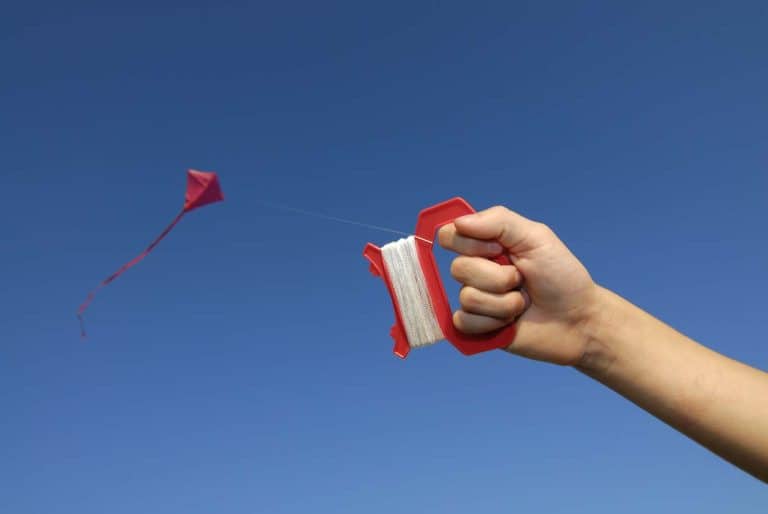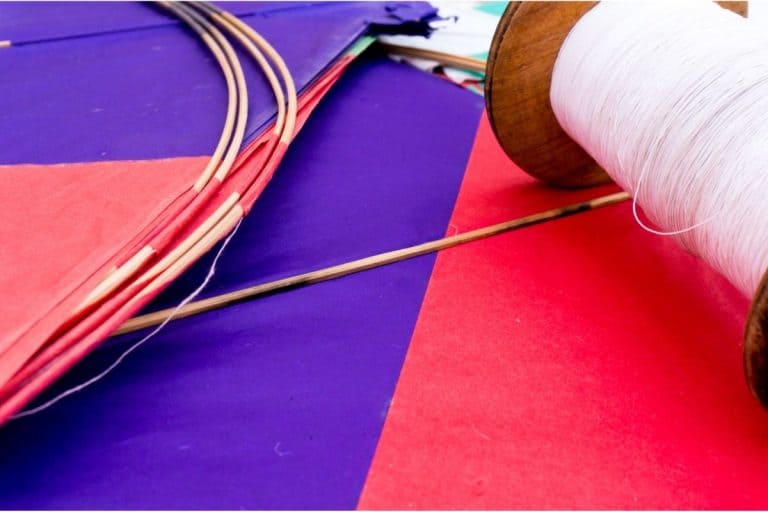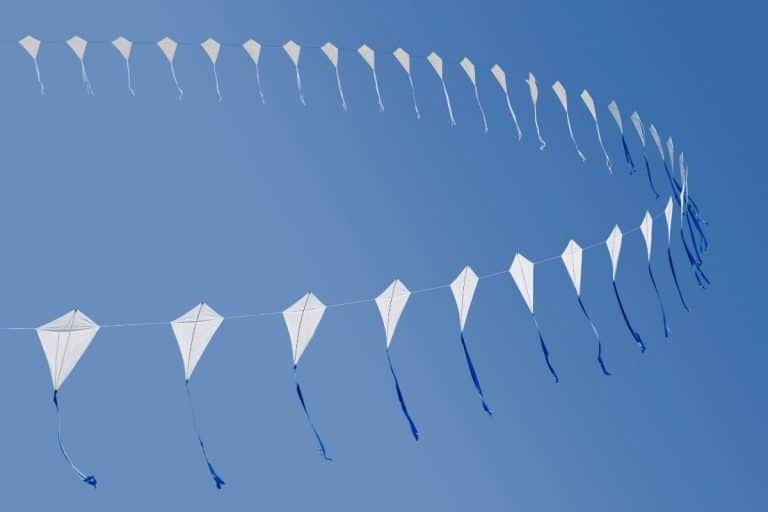The 8 Best Shapes For Kites: What Is The Best Shape For A Kite?
Kites have always been fascinating. Watching colorful kites in different designs is so amazing that many countries have facilitated their kite festival. It has become the worldwide sport, pastime, and recreation for many people in almost every culture.
Over the years, kite festivals showcased unique designs and bewildered the audience. Kites have come in their best shapes to ensure aesthetics and to guarantee that it sits in the sky.
Among the different shapes of kites are diamond, delta, parafoil, box kite, stunt kites, dual-line, foil kites, cellular kites, and sled kites.
You may be wondering, with thousands of kites launched for many years, which among them is the easiest to fly? What is the best shape for a kite? Which shape is the most efficient?
In this article, you can find everything you need to know about the shapes of the kites.
What Are The Different Kinds Of Kites?
While there are many different kites worldwide, those kites have things in common. Before delving deeper into the best shapes for kites, here are the different kinds of kites.
- Single-line kites
- Dual-line kites
- Quad-line stunt kites
The notable difference between these kites is the number of lines or strings the person can hold to control and maneuver the kite. Single-line kites, per se, have one line that can limit the maneuverability of the kite. A dual-line has two lines that are much easier to control, helping it perform the tricks more precisely and efficiently.
On the other hand, the quad-line stunt kites are usually made for performance and amaze the audience with different stunts brought by having complete control over each corner of the kite. It may be more complicated to assemble, but quad-line is more fun to fly.
What Are The Different Shapes Of Kites?
Diamond
Perhaps, the shape that is mainly associated with the kite is the classic diamond kite. Diamond kites are easy to make and easy to assemble. But, surprisingly, it is pretty tricky to launch it and control it in the sky.
Diamond kites are single-lined kites characterized by four sides with two pairs of sides of equal length. It would be best if you made it using durable and high-quality materials to fight windy and turbulent weather.
Delta
Single-lined Delta kites are the most recommended design for children and beginners. Though many designs added some twists, it has a triangular shape – designing it like a butterfly and bird.
Delta kites can also be dual-line kites. The dual-line version of the delta is suitable for enthusiasts with higher skill levels in kite flying. It has a keel to hold the spine straight and keep it rigid, and it can also have tails attached to the spine or the wing tips.
Parafoil
Parafoils are also called foils kites, and it is an ideal kite for beginners. The main difference between parafoils to all other kites is that this shape has no frame, no sticks, and no spars. It can be a single, dual, or quad-line variety, though the latter has more control to perform various tricks.
Parafoils have upper and lower skin with vertical fabric cells sewn between the two skins. The air-filled cells gave shape and form so they could take flight. Parafoils are soft and less likely to break if they hit hard surfaces or crash down.
Box Kite
Box kites are made with a typical design of four parallel struts with diagonal crossed struts to make them rigid. It is easier to point this out among the rest as the shape is a box or prism. The design usually has ribbons wrapped around the box’s ends, leaving the kite’s ends and middle open. (source)
Box kites are known for developing relatively high lifts. It can reach as high as 16,009 ft above its launching point when flying. Box kites are kept in place as the wind moves through them. As there is a difference in air pressure, it lifts higher because the air pressure is more substantial on the bottom, pushing it up.
Stunt Kites
Stunt kites can be two-line deltas, diamonds, parafoils, and quad-line kites. Generally, stunt kites have the main spar and two leading-edge spars with fabric stretched between them with a horizontal spreader to keep the kite’s shape.
Dual Line Foil Kites
Dual-line foil kites have two-line controls, hence, the name. It has an inflated frameless wing, making it fast and fully maneuverable. It can perform while staying rigid at whatever wind speed. Generally, dual-line foil kites are built for pure stunt flying fun, while some are built for speed. The fastest record was over 150kph.
Cellular Kites
Cellular kites are three-dimensional in shape and come in a wide array of designs, making them fancier with fins, vanes, or even wings. However, it needs a good wind to fly well, making it quite challenging.
The most common design of cellular kites is the classic Cody kite, known for the man-lifting kite system. It was patented in 1901 as a winged box kite and historically invented as a lookout platform, lifting a soldier high in the air. (source)
Sled Kites
Sled kites are now made of inflatable spars and lightweight plastic to lend them versatility. It can withstand heavy collisions on hard surfaces and is easily assembled and highly portable. Kites can also be folded in squash to store in smaller spaces, making them more suitable for children and family fun activities.
What Is The Best Shape For A Kite?
Any shape of a kite can fly if one has the proper knowledge and experience. Because regardless of the design, the kite must conform to the laws of aerodynamics to gain lift from the wind, keep it from blowing away, and direct the kite face at the proper angle to the wind.
Unlike what beginners usually prefer to make, diamond kites are the hardest to fly. The design and shape may be easy to make and assemble since this is the most popular design. Yet, diamond-shaped kites are the most difficult to get into the air among the single-line kites.
According to experts, the best shape for a kite is the delta. Delta kites have the standard triangular shape. It is easy to launch and fly even with no wind. Generally, it has no tail. But, some designs have added a tail attached to the center or wing tips to maintain stability in turbulent weather.
Does The Shape Of A Kite Affect Its Flight?
As a rule, the aerodynamic shape of the kite affects its flight. Kites appear to have come in different forms, making them easy or difficult to fly and control. But generally, kites are variations of flat and curved surfaces.
As the kite flies because of the wind, it must be in proper shape and angle. The body must have been streamlined with a pointed corner to help split the air. The form must allow air to move over the top faster than the air over the bottom.
The materials of the kite must be very lightweight.
The air must lift the kite to get it up in the sky. The lift modifies with the square of air velocity. When the kite is at rest, the air velocity equals the wind speed. The velocity changes as you pull the string or release the line. The air velocity that goes by the kite must be sufficient enough to lift the kite.
What Makes A Good Kite Design?
Kites come from almost any shape and design you can ever imagine. Kite festivals and enthusiasts showcased various designs, but what makes the kite good enough?
As a rule, three factors make a good kite.
Practicality
When making a kite, it is essential to consider its practicality. Is it easy to transport or requires big vehicles to transport? How small does it fold up? How fragile is it?
The kite must be easy to make and assemble. It must not add challenges that can take the fun away from flying a kite, such as difficulty in assembling or children can not fly it.
Flight Control
Flying a kite may need basic skills to launch and maintain it in the sky. Though some kites are easy to launch, it is necessary to have flight control. Constant relaunching and immediately crashing it does not make it a good kite.
Wind Range
A good kite must be lightweight to take off, even without wind quickly. But, it must be durable enough to withstand air pressure and turbulence. You wouldn’t want to spend hours assembling a kite, only to break it in just a second by a sudden wind burst.
Fun Factor
Kite flying must be a fun activity. Does the kite draw gasps of admiration from the crowd? Can small kids fly it quite easily, or may grandparents still be able to maneuver it in the sky?
What Is The Most Efficient Kite Design?
The following factors determine the efficiency of the kite
- Stability despite changes in the relation of the weight to the velocity of the wind
- No deformation despite the excessive pressure
- Form stay streamlined and not altered
- Easy to assemble and lift
Among the kite design, parafoils are the most efficient kite design. Parafoils are known as soft kites, consisting of several cells running fore to aft, some or all of which are open at the front to allow air to inflate the kite, so it takes on an aerofoil section. They provide significant lift when parked overhead. (source)
One great example of parafoils is the parachute. You can use these parachutes for various activities, including kitesurfing, kite landboarding, snowkiting, kite buggying, kite-energy systems or airborne wind energy, and recreational kiting. As an efficient kite, parachutes are easy to fold for transport and much less likely to break on impact when it crashes to the ground.
What Are The Most Popular Kite Shapes?
Dating back to 9500–9000 BC, the earliest depiction of a kite was in the Mesolithic cave painting at Muna island, southeast Sulawesi, Indonesia. This oldest picture was said to be used by modern Muna people.
Since then, many kite festivals have seen a wide variety of kites in all sorts of designs and many striking colors. Among these, the diamond kite is the most popular kite shape.
Diamond kite is famous even among children and kite flying enthusiasts. Even in most children’s books, the word kite is almost synonymous with the shape of the diamond and is usually associated with the image of the diamond kite.
What Is The Best Material For A Kite?
Kite materials come from almost any material, such as paper, fabric, or thin plastics. Anything that can fly can be a material to build a kite.
For Steve Farrel, “I’ve been judging kites for twenty years and have seen many fabrics: bed sheets, blue tarps, tree leaves, plywood, raincoats, suit lining, webbing in those old woven lawn chairs, various plastics, and papers, potato chip bags, pizza boxes. I even saw a flying bra at one festival. Anything can be used.” (source)
However, there are just some materials that work best for a kite. As a kite must be lightweight but durable, the best materials for a kite must also be light, strong, durable, easy to work with, has a porosity close to zero, and available in colors that look pretty in the sky.
Ripstop Nylon Fabric
Ripstop nylon fabrics are the most commonly used materials for good-quality kites. It is tear-resistant and has a coating to prevent stretch. The covering is usually a urethane polymer similar to urethane varnishes. Often used for parachutes, this fabric is lightweight and durable.
Ripstop Polyester Fabric
Ripstop polyester is generally cheaper than most kites made with ripstop nylon. It is a common material to make kites for most children and family kites.
Polyester Fabric
Polyester fabric is also available in a non-ripstop version. These are used to make smaller kites as smaller kites generally do not have a powerful pull and do not need additional reinforcement to prevent tears.
Paper
Paper is also a popular material for a kite, and it is used much in The Adelaide Kite Festival. There was a train of traditional Taiwanese kites made of paper, and even the rokkakus in Japan are often made of paper too. Paper-made kites are easy to make and usually reliable to fly.
If you choose to work with paper for the kite, bear in mind lightness and porosity. You can use gift wrapping, rice, origami, newspaper, and Washi paper from Japan. It is solid but can be light enough for a kite.
However, one disadvantage of a paper-made kite is when it suddenly rains. As paper quickly absorbs water rain, you can easily tear it down.
Plastic Bags
Plastic bags are another excellent material for a kite; they are durable and can withstand rainwater. Moreover, they can fly pretty high and are inexpensive for the cost. This kind of material is easy for DIYs kites, especially for children.
Do Kites Need Tails?
The basic kite designs have tails, while the modern designs have no tails. Single-line and flat kites often added tails to add flair. But, the kite tails have more functions than aesthetic purposes.
Tails help a kite to fly better and more stable. The tail has an added mass and drag to the lower area of the kite. The drag is the force that pulls back the kite in the direction the wind is going. Without a tail, the kite may fly, but it is more likely to still spin and roll around a lot.
The kite’s tail must be proportionate to its shape, size, and frame. A shorter tail may not serve its purpose though it can add flair. A longer tail may help the kite become stable, but it can be so heavy that it can limit the possibility of the kite flying higher.
Take Note
Remember, the kite must be high enough in the sky to become stable. On the lower ground, the possibility of the kite crashing down is higher because of the turbulence brought by obstacles such as trees and buildings. The turbulence added pressure to the kite that modified the forces it needed to keep in balance.
For kite experts, adding a tail to the kite that is around 3 to 8 times the length of the kite is highly recommended. However, remember that a kite’s success is affected by many factors such as materials, frame, bridle, weight, and aerodynamics.
Summary
Whatever shape or design the kite has, every kite is equally enjoyable. Each form has pros and cons, and the only difference between each other is the suitability of the skill level of the person controlling the kite.
But knowing the best shapes for a kite helps you fully understand the mechanism of each design. Whether you are a beginner or want to give the children a fun-filled activity, the best thing to do is enjoy kite flying, small or big, in whatever shape.
Sources
- FERGUSSON, F. “The Stability and Efficiency of Kites.” Nature 83, 310 (1910). Accessed June 29, 2022. https://doi.org/10.1038/083310a0
- FERREL, S. “There’s No Such Thing As Kite Fabric.” American Kitefliers Association. Kiting Magazine 2010 Vol 32 Issue 3. (2010). Accessed June 29, 2022. https://www.kite.org/about-kites/how-to-make-a-kite/kite-fabric-what-you-need-to-know/
- RUDDY, A. “Different Types Of Kites”. (2019). Accessed June 29, 2022. https://www.kite-festival.org.uk/different-types-of-kites/
- CROUCH, T. D. “Hargrave box kite”. Encyclopedia Britannica. (2007). Accessed June 29, 2022. https://www.britannica.com/topic/Hargrave-box-kite
- MAXWELL, E. “Kite”. Encyclopedia Britannica. (2018). Accessed June 29, 2022. https://www.britannica.com/topic/kite-aeronautics







